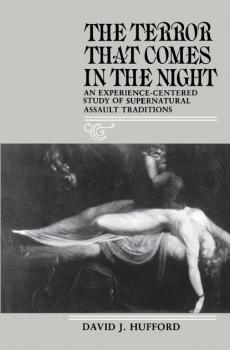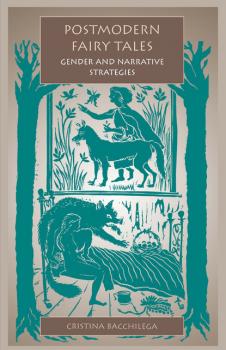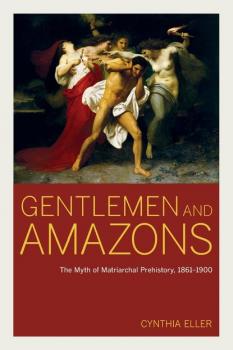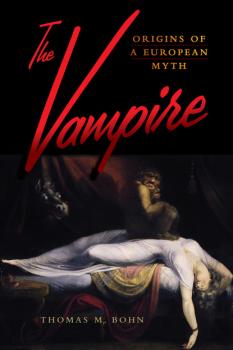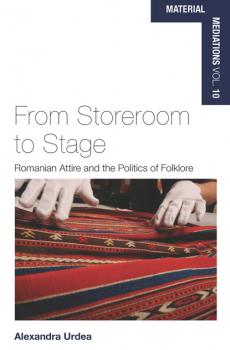ТОП просматриваемых книг сайта:















Старинная литература: прочее
Различные книги в жанре Старинная литература: прочее, доступные для чтения и скачиванияАннотация
David Hufford's work exploring the experiential basis for belief in the supernatural, focusing here on the so-called Old Hag experience, a psychologically disturbing event in which a victim claims to have encountered some form of malign entity while dreaming (or awake). Sufferers report feeling suffocated, held down by some «force,» paralyzed, and extremely afraid. The experience is surprisingly common: the author estimates that approximately 15 percent of people undergo this event at some point in their lives. Various cultures have their own name for the phenomenon and have constructed their own mythology around it; the supernatural tenor of many Old Hag stories is unavoidable. Hufford, as a folklorist, is well-placed to investigate this puzzling occurrence.
Аннотация
In the classic rags-to-riches fairy tale a penniless heroine (or hero), with some magic help, marries a royal prince (or princess) and rises to wealth. Received opinion has long been that stories like these originated among peasants, who passed them along by word of mouth from one place to another over the course of centuries. In a bold departure from conventional fairy tale scholarship, Ruth B. Bottigheimer asserts that city life and a single individual played a central role in the creation and transmission of many of these familiar tales. According to her, a provincial boy, Zoan Francesco Straparola, went to Venice to seek his fortune and found it by inventing the modern fairy tale, including the long beloved Puss in Boots, and by selling its many versions to the hopeful inhabitants of that colorful and commercially bustling city. With innovative literary sleuthing, Bottigheimer has reconstructed the actual composition of Straparola's collection of tales. Grounding her work in social history of the Renaissance Venice, Bottigheimer has created a possible biography for Straparola, a man about whom hardly anything is known. This is the first book-length study of Straparola in any language.
Аннотация
Postmodern Fairy Tales seeks to understand the fairy tale not as children's literature but within the broader context of folklore and literary studies. It focuses on the narrative strategies through which women are portrayed in four classic stories: «Snow White,» «Little Red Riding Hood,» «Beauty and the Beast,» and «Bluebeard.» Bacchilega traces the oral sources of each tale, offers a provocative interpretation of contemporary versions by Angela Carter, Robert Coover, Donald Barthelme, Margaret Atwood, and Tanith Lee, and explores the ways in which the tales are transformed in film, television, and musicals.
La versione greca dellorazione Pro Archia poeta di Mikołaj Żórawski (1632) - Roberto Peressin
Warsaw Studies in Classical Literature and CultureАннотация
Nel solco degli studi sul «greco umanistico», che negli ultimi decenni hanno conosciuto un notevole e fervido sviluppo, il volume presenta il caso di una rara traduzione in greco classico della celebre orazione «Pro Archia poeta» di Cicerone. Com’è noto, a partire da Petrarca e per generazioni essa costituì un’ode alla bellezza e al giovamento procurati dall’arte e dalla poesia. Lo studio, oltre a proporre il testo, accompagnato da un’approfondita analisi linguistico-filologico-stilistica, mira a far luce sul contesto storico-letterario in cui operò l’autore, il polacco Mikołaj Z˙órawski (1595-1665). Figura poco nota del primo barocco sarmatico, fu non soltanto astrologo e medico, ma altresì appassionato traduttore di Cicerone all’Accademia di Cracovia. In the wake of the studies on Humanist Greek, which have recently known a lively development, the volume presents the case of a rare Greek translation of Cicero’s speech «Pro Archia poeta». As is known, starting from Petrarch and for generations the oration represented an ode to the beauty and the benefits deriving from art and poetry. The book provides the text, accompanied by an in-depth linguistic and stylistical analysis, and it also sheds light on the historical and literary background in which the author worked. The Pole Mikołaj Z˙órawski (1595-1665), an interesting though little known figure of the early Polish Baroque, was not only an astrologer and a physician, but also a passionate translator of Cicero at the Academy of Cracow.
Аннотация
During the archaic and classical periods, Greek ideas about the dead evolved in response to changing social and cultural conditions—most notably changes associated with the development of the polis, such as funerary legislation, and changes due to increased contacts with cultures of the ancient Near East. In <i>Restless Dead</i>, Sarah Iles Johnston presents and interprets these changes, using them to build a complex picture of the way in which the society of the dead reflected that of the living, expressing and defusing its tensions, reiterating its values and eventually becoming a source of significant power for those who knew how to control it. She draws on both well-known sources, such as Athenian tragedies, and newer texts, such as the Derveni Papyrus and a recently published <i>lex sacra</i> from Selinous.<br /><br />Topics of focus include the origin of the <i>goes</i> (the ritual practitioner who made interaction with the dead his specialty), the threat to the living presented by the ghosts of those who died dishonorably or prematurely, the development of Hecate into a mistress of ghosts and its connection to female rites of transition, and the complex nature of the Erinyes. <i>Restless Dead</i> culminates with a new reading of Aeschylus' <i>Oresteia</i> that emphasizes how Athenian myth and cult manipulated ideas about the dead to serve political and social ends.
Аннотация
In this new translation of Hesiod, Barry B. Powell gives an accessible, modern verse rendering of these vibrant texts, essential to an understanding of early Greek myth and society. With stunning color images that help bring to life the contents of the poems and notes that explicate complex passages, Powell’s fresh renditions provide an exciting introduction to the culture of the ancient Greeks.<BR /><BR /> This is the definitive translation and guide for students and readers looking to experience the poetry of Hesiod, who ranks alongside Homer as an influential poet of Greek antiquity.
Аннотация
The Saga of the Volsungs is an Icelandic epic of special interest to admirers of Richard Wagner, who drew heavily upon this Norse source in writing his Ring Cycle and a primary source for writers of fantasy such as J. R. R. Tolkien and romantics such as William Morris.A trove of traditional lore, it tells of love, jealousy, vengeance, war, and the mythic deeds of the dragonslayer, Sigurd the Volsung.Byock's comprehensive introduction explores the history, legends, and myths contained in the saga and traces the development of a narrative that reaches back to the period of the great folk migrations in Europe when the Roman Empire collapsed.
Аннотация
Gentlemen and Amazons traces the nineteenth-century genesis and development of an important contemporary myth about human origins: that of an original prehistoric matriarchy. Cynthia Eller explores the intellectual history of the myth, which arose from male scholars who mostly wanted to vindicate the patriarchal family model as a higher stage of human development. Eller tells the stories these men told, analyzes the gendered assumptions they made, and provides the necessary context for understanding how feminists of the 1970s and 1980s embraced as historical «fact» a discredited nineteenth-century idea.
Аннотация
Even before Bram Stoker immortalized Transylvania as the homeland of his fictional Count Dracula, the figure of the vampire was inextricably tied to Eastern Europe in the popular imagination. Drawing on a wealth of heretofore neglected sources, this book offers a fascinating account of how vampires—whose various incarnations originally emerged from the folk traditions of societies throughout the world—became identified with such a specific region. It demonstrates that the modern conception of the vampire was born in the crucible of the Enlightenment, embodying a mysterious, Eastern “otherness” that stood opposed to Western rationality.
From Storeroom to Stage - Alexandra Urdea
Material Mediations: People and Things in a World of MovementАннотация
Departing from an ethnographic collection in London, From Storeroom to Stage traces the journey of its artefacts back to the Romanian villages where they were made 70 years ago, and to other places where similar objects are still in use. The book explores the role that material culture plays in the production of value and meaning by examining how folk objects are mobilized in national ideologies, transmissions of personal and family memory, museological discourses, and artistic acts.
Информация о книге
Автор произведения Alexandra Urdea
Жанр Старинная литература: прочее
Серия Material Mediations: People and Things in a World of Movement

